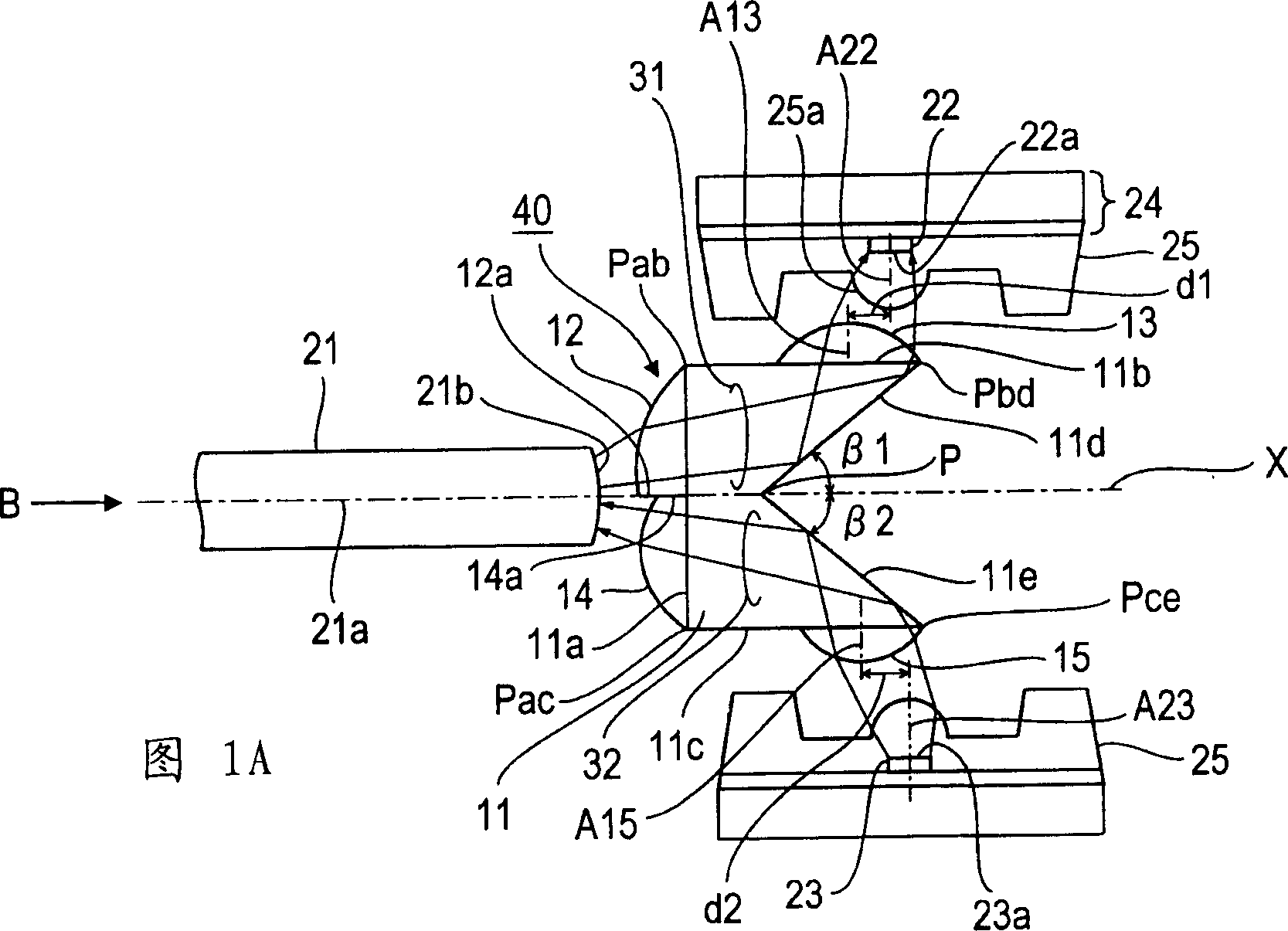Optical device for double-path optical communication and op-tical emitting-receiving machine
An optical element, dual-path optical technology, applied in the direction of optical elements, optics, electrical elements, etc., can solve the problems of unavoidable crosstalk, far-end crosstalk, etc.
- Summary
- Abstract
- Description
- Claims
- Application Information
AI Technical Summary
Problems solved by technology
Method used
Image
Examples
Embodiment Construction
[0032] Embodiments of the present invention will be discussed in detail by way of example with reference to the accompanying drawings, in which and Figures 6A-6B Corresponding parts are marked with the same reference numerals and will not be described in detail again.
[0033] 1A-1B illustrate an embodiment of an optical element 40 for two-way optical communication according to the present invention, and an optical transmitter receiver formed by combining the optical element 40 with a light receiving element 22 and a light emitting element 23 . In this example, the optical element 40 includes a prism 11 having a cross-section corresponding to Figures 6A-6B The prism 11 in the optical element 10 shown has a similar pentagonal shape and has lenses 12-15 integrated on the surface. In FIG. 1A , a one-dot chain line indicates the optical axis 21 a of the optical fiber 21 positioned together with the optical element 40 .
[0034] The prism 11 of this embodiment differs from prio...
PUM
 Login to View More
Login to View More Abstract
Description
Claims
Application Information
 Login to View More
Login to View More - R&D
- Intellectual Property
- Life Sciences
- Materials
- Tech Scout
- Unparalleled Data Quality
- Higher Quality Content
- 60% Fewer Hallucinations
Browse by: Latest US Patents, China's latest patents, Technical Efficacy Thesaurus, Application Domain, Technology Topic, Popular Technical Reports.
© 2025 PatSnap. All rights reserved.Legal|Privacy policy|Modern Slavery Act Transparency Statement|Sitemap|About US| Contact US: help@patsnap.com



